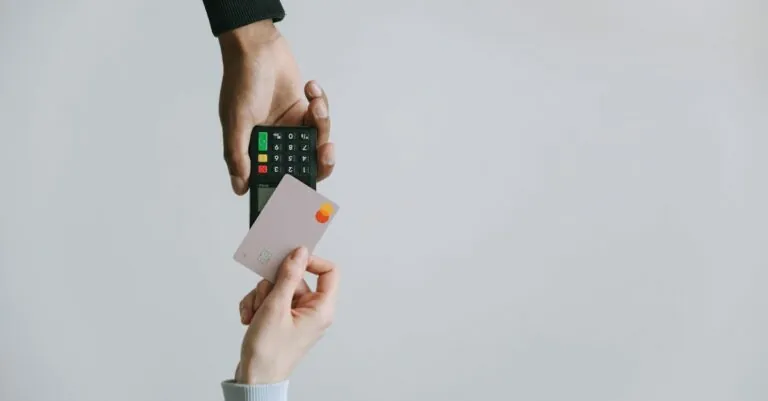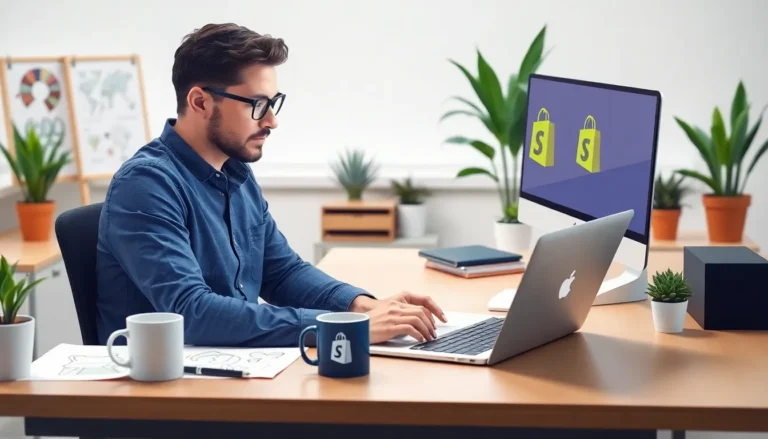Table of Contents
ToggleIn a world where first impressions matter more than ever, a freelancer’s logo isn’t just a pretty picture—it’s the digital equivalent of a firm handshake. It’s the visual cue that says, “I’m a pro, and I take my work seriously!” Whether it’s a quirky icon or a sleek design, a well-crafted logo can elevate a freelancer from the sea of sameness to the spotlight of success.
What Is a Freelancer Logo?
A freelancer logo represents a professional’s brand identity. This graphic element creates recognition and establishes credibility in a competitive market.
Importance of a Logo for Freelancers
A logo distinguishes freelancers from competitors. It enhances visibility, making it easier for potential clients to remember their brand. Logos communicate professionalism, signaling commitment to quality. Clients often associate well-designed logos with reliability, which can influence their hiring decisions. An effective logo can also build trust, inviting collaboration and engagement.
Key Elements of a Freelancer Logo
Several key elements contribute to an impactful freelancer logo. Simplicity ensures instant recognition, while uniqueness helps create a memorable impression. Color choice evokes emotions and aligns with the freelancer’s brand identity. Typography conveys personality; the right font matches the freelancer’s style and target audience. Additionally, scalability allows the logo to maintain integrity across various platforms, from business cards to websites.
Types of Freelancer Logos

Freelancers utilize different logo types to represent their brand identity effectively. Each logo type conveys unique characteristics that reflect individual styles and services.
Wordmark Logos
Wordmark logos use text to showcase a freelancer’s name or brand. These logos focus on typography, presenting clear and recognizable letters without accompanying symbols. A well-designed wordmark logo can enhance memorability. Classic examples include Google and Coca-Cola. The key to success lies in choosing fonts that align with the freelancer’s image, ensuring that the logo remains easy to read across various platforms.
Pictorial Logos
Pictorial logos incorporate images or symbols that represent a freelancer’s services or personality. Iconic images often evoke emotions or ideas that resonate with the target audience. A pictorial logo can be powerful, as it bypasses language differences, promoting instant recognition. Well-known examples like Apple and Twitter illustrate this concept. Selecting an image relevant to the freelancer’s niche aids in creating a lasting impression on potential clients.
Abstract Logos
Abstract logos feature unique shapes or symbols that don’t directly depict a specific object. These logos often convey ideas rather than literal representations, allowing for broad interpretation. A successful abstract logo captures the essence of a freelancer’s brand through creativity. Prominent examples include the logos of Nike and Pepsi. Crafting an abstract logo requires thoughtful consideration of colors and forms, ensuring alignment with the freelancer’s professional identity.
Designing Your Freelancer Logo
Designing a freelancer logo requires a thoughtful approach. Key elements include colors and fonts that resonate with the target audience and convey the desired brand message.
Choosing Colors and Fonts
Selecting colors and fonts influences the overall impact of the logo. Colors evoke emotions; for example, blue conveys trust, while red signifies passion. Variations in color can create different impressions, so careful consideration is necessary. Fonts also play a significant role; serif fonts suggest professionalism, while sans-serif fonts feel modern and approachable. Mixing typographic styles can enhance uniqueness but should remain harmonious. Ultimately, the right combination of colors and fonts creates a memorable identity that aligns with the freelancer’s services.
Tips for Effective Logo Design
Effective logo design combines simplicity, uniqueness, and relevance. Begin with a clear concept that captures the essence of the brand. Drawing inspiration from successful logos can spark creativity, but avoid direct imitation. Experimenting with different designs helps refine choices. Getting feedback from peers provides valuable perspectives. Testing logos across various platforms ensures versatility and clarity. Maintaining a cohesive look across all branding materials strengthens recognition. Prioritize creating a logo that not only stands out but also authentically represents the freelancer’s identity and values.
Common Mistakes to Avoid
Creating a successful freelancer logo involves avoiding common pitfalls. Mistakes can diminish professionalism and brand impact.
Overcomplicating Your Design
Simplicity holds significant value in logo design. When a design becomes overly intricate, it can confuse potential clients. Logos need to be instantly recognizable, so complex details distract from core elements. Focusing on clean lines and straightforward shapes enhances memorability. If too many colors or images are included, the essence of the logo gets lost. Strive for a balance between creativity and simplicity to communicate the brand effectively.
Ignoring Your Target Audience
Understanding the target audience influences logo effectiveness. Logos should resonate with potential clients and reflect their preferences. If a logo fails to consider the audience’s tastes, it may not create the desired connection. Conducting research on client demographics helps in shaping the right aesthetics—such as color choices and typography. Aligning with audience expectations ensures the logo resonates and prompts engagement. This approach strengthens brand loyalty and recognition in a competitive market.
A freelancer’s logo is more than just a graphic; it’s a vital part of their brand identity. It plays a significant role in attracting clients and establishing trust in a crowded marketplace. By focusing on simplicity, uniqueness, and relevance, freelancers can create logos that resonate with their target audience and reflect their professional values.
The design process should be thoughtful and strategic, ensuring that every element communicates the desired message. With the right logo, freelancers can effectively differentiate themselves from competitors and leave a lasting impression on potential clients. Investing time and effort into logo design can lead to enhanced visibility and stronger brand loyalty, ultimately contributing to long-term success in their freelance careers.




